A town of freed slaves – on Robert E. Lee’s old estate – was destroyed to make Arlington cemetery
Freedman’s Village was a haven for so-called ‘contraband’ people
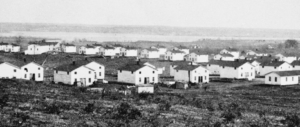
The houses at Freedman’s Village. (Hulton Archive/Getty Images)
(Timeline.com) Sojourner Truth was outraged, but her feelings didn’t show in a letter she wrote about her meeting with Abraham Lincoln in October 1864. She’d gone to Lincoln to call his attention to the conditions at settlements for former slaves, including one called Freedman’s Village, where she asked to be appointed as a counselor. “I was never treated with more kindness and cordiality,” she wrote to a fellow abolitionist of her meeting with the president. Lincoln granted her request to work at the camp, and Truth lived there for a year, preaching and otherwise advocating for the people who lived there.
Freedman’s Village, which started in 1863 with 50 wooden houses, was touted as a model community when it was dedicated, with farms, a hospital, an orphanage, and a home for the elderly. By 1864, though, conditions were dismal. People were hungry, unwanted by the surrounding community, and exploited by opportunists. “I am a going around among the colored folks and find out who it is sells the clothing to them that is sent to them from the North,” Truth wrote to her daughter, deeply dismayed, shortly before her meeting with Lincoln.
Through the work of Truth and missionary organizations, the camp became a permanent home for former slaves. That home lasted until 1890, when it was razed-residents driven from their homes-to make way for Arlington National Cemetery. (more)
A 100-year-old US riot only now being talked about
It’s almost 100 years since 19 African-American soldiers were executed following a violent mutiny in Texas. Why is the US only now coming to terms with what happened?
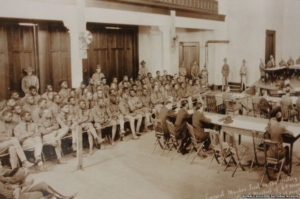
The Houston Mutiny court martial involved 64 members of the 24th Infantry. (Buffalo Soldiers National Museum)
(BBC.com) For decades, no name appeared above the grave of Corporal Jesse Moore, only the number seven.
The figure corresponded to noose number seven which was used to hang him and another 12 African-American soldiers beside the Salado Creek of San Antonio in December 1917.
The executions followed the rainy August night when more than 100 armed soldiers marched into the city of Houston and during a two-hour riot killed 16 whites, including five policemen. The resulting court martial staged in three parts was the largest in US military history.
A total of 118 enlisted black soldiers were indicted, with 110 found guilty, 19 hanged and 63 receiving life sentences.
“They were denied due process guaranteed by the Constitution and died horrible deaths,” says Angela Holder, Moore’s great-niece and a history professor at Houston Community College. (more)
Related: See the TIPHC special project about the Camp Logan Mutiny.
African American Museum To Digitize Vintage Photos, Videos For Black Families
“We recognize the importance of these vernacular, homemade images, this folk cinema, as an alternate history to the kinds of history that the mass media tells.”

The National Museum of African American History and Culture
(Huffington Post) The National Museum of African American History and Culture in Washington is giving black families a chance to preserve their memories for free.
As a part of its new initiative, called The Great Migration Home Movie Project, families can schedule an appointment and bring their vintage photos and videos to the Robert F. Smith Explore Your Family History Center, located in the museum. Conservators will digitize motion picture film, obsolete video tape formats and audio formats, according to the project’s website.
“In a very radical way, we recognize the importance of these vernacular, homemade images, this folk cinema, as an alternate history to the kinds of history that the mass media tells,” Walter Forsberg, media archivist with the museum, told The Baltimore Sun. “We wanted to render a public service free of charge because we knew there was a lot of material out there trapped on obsolete formats.”
The museum also has collected home videos from black celebrities and families to use, according to the project’s website, as a tool for “understanding and re-framing black moving image history, and provide a much needed visualization of African American history and culture.” (more)
Black history briefs
Nov. 28, 1961: Ernie Davis became the first African American to win the collegiate Heisman Trophy while a running back at Syracuse University. He was unable to play professional football after being diagnosed with leukemia. His life story was portrayed in the 2008 movie, The Express.
Nov. 30, 1912: Photographer, musician, writer and film director Gordon Parks was born. One of his best-known photographs, American Gothic, featured an African-American woman, Ella Watson, who worked on the cleaning crew of the FSA building, standing stiffly in front of an American flag hanging on the wall, a broom in one hand and a mop in the background. Parks had been inspired to create the image after encountering racism repeatedly in restaurants and shops in segregated Washington, D.C. For 20 years Parks worked as a photojournalist for Life magazine, producing images on subjects including sports, fashion, poverty and racial segregation. He went on to become the first African American to direct a major Hollywood motion picture, “The Learning Tree,” but is best known for his 1971 film, “Shaft.”
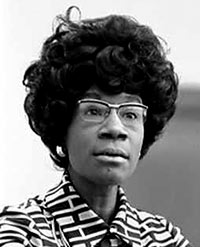
Congresswoman Shirley Chisholm
November 30, 1924: Congresswoman Shirley Chisholm was born in Brooklyn, New York. In 1964, she ran for the state Legislature in New York and won. In 1968, she became the first African-American woman elected to Congress.
Dec. 1, 1955: Four days after hearing a civil rights leader talk about Emmett Till, Rosa Parks refused to give up her seat to a white man on a city bus in Montgomery, Alabama. Her arrest sparked the Montgomery Bus Boycott. Weeks after her first arrest, she was jailed again, this time for her role in the boycott, helping arrange carpool rides for African Americans. When she received death threats and lost her job as a seamstress, she and her family were forced to move to Detroit, where they struggled financially until U.S. Rep. John Conyers Jr. hired her. She continued to work on issues such as poverty, health care, housing and police brutality until her death in 2005.
Dec. 2, 1806: Thomas Jefferson addressed Congress, urging them to stop the slave trade as soon as the constitutional restriction expired the next year. The author of the Declaration of Independence had already convinced Virginia to halt the importation of any others into slavery, calling it “an abominable crime” and a “moral depravity.” Despite such talk, the vast majority of those he had enslaved on his Monticello plantation never went free. When he died in 1826, they were sold to cover his debts.
(Briefs are excerpts from “Journey to Justice,” Jackson (Ms.) Clarion-Ledger)
TIPHC Bookshelf
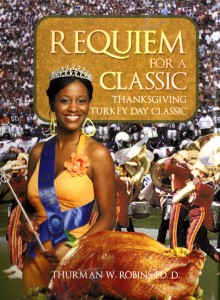 Published scholarship on black history in Texas is growing and we’d like to share with you some suggested readings, both current and past, from some of the preeminent history scholars in Texas and beyond. We invite you to take a look at our bookshelf page – including a featured selection – and check back as the list grows. A different selection will be featured each week. We welcome suggestions and reviews. This week, we offer, “Requiem for A Classic: Thanksgiving Turkey Day Classic,” by Thurman Robins, Ed.D.
Published scholarship on black history in Texas is growing and we’d like to share with you some suggested readings, both current and past, from some of the preeminent history scholars in Texas and beyond. We invite you to take a look at our bookshelf page – including a featured selection – and check back as the list grows. A different selection will be featured each week. We welcome suggestions and reviews. This week, we offer, “Requiem for A Classic: Thanksgiving Turkey Day Classic,” by Thurman Robins, Ed.D.
In the era when segregation and Jim Crow laws ruled the land, The Turkey Day Classic was created. The event prospered from 1927 to 1966. Newspaper accounts describe the classic between Jack Yates and Phillis Wheatley High Schools as the largest annually attended schoolboy game in America.
Fans came dressed to kill to witness the game and the glorious halftime activities. Marching bands, drill squads, and other performing groups gave eloquent entertaining performances during halftime. However, the crowning of the schools queens were the highlights of halftime. Game summaries, team lineups, and editorial comments by the author are presented.
This Week in Texas Black History, Nov. 26-Dec.2
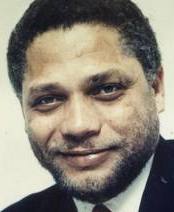
Mickey Leland
Nov27
On this day in 1944, U.S. Congressman Mickey Leland was born in Lubbock. He graduated from Houston’s Phillis Wheatley High School in 1963 and earned a pharmacy degree from Texas Southern University in 1970. Leland served six terms in Congress (18th District) and five years as a Texas state legislator (88th District). He was a civil rights activist and a staunch advocate in the fight against hunger. He was the lead supporter for passage of the Africa Famine Relief and Recovery Act of 1985, legislation that provided $800 million in food and humanitarian relief supplies. Leland died in a plane crash on August 7, 1989 while on a relief mission to an isolated refugee camp, Fugnido, in Ethiopia, which sheltered thousands of unaccompanied children fleeing the civil conflict in neighboring Sudan.
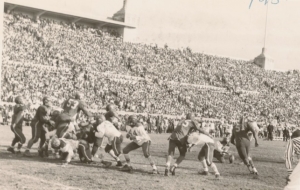
Nov28
The Jack Yates – Phillis Wheatley high school football rivalry in Houston started in 1927, but the game officially became the “Turkey Day Classic” on this day in 1946. Played at Jeppesen Stadium — then a venue for public school sports events, the Thanksgiving Day game would be played until 1966 and drew standing room only crowds of 30,000-plus fans making it, for many years, the largest event in the nation for high school football.
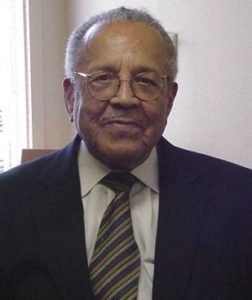
Claude William Black, Jr.
Nov28
Claude William Black, Jr., minister and political figure, was born on this day in 1916 in San Antonio. Rev. Black was pastor of Mt. Zion First Baptist Church in San Antonio for almost 50 years, but was also a noted Civil Rights leader who became a four-term city councilman (1973-1978) and the city’s first black Mayor Pro Tem. He was an associate of Martin Luther King, Jr., A. Phillip Randolph, and Thurgood Marshall. During President Lyndon Johnson’s administration, Black was a delegate to the White House Conference on Civil Rights.
December
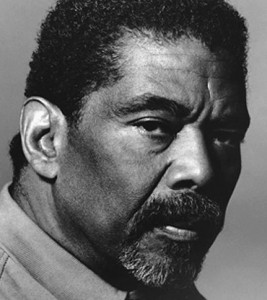
Alvin Ailey
Dec1
On this day in 1989, dancer and choreographer Alvin Ailey died in New York City of blood dyscrasia. Ailey, a native or Rogers, Texas, founded his namesake dance theater in 1958. A native of Rogers (Bell County), Ailey made his Broadway debut in 1954 and in 1958 gained his first critical success for his choreography for Blues Suite, which also marked the beginning of the Alvin Ailey Dance Company. His troupe, in 1970, became the first American dance company to tour the USSR in 50 years and received a 20-minute ovation for their performance in Leningrad.
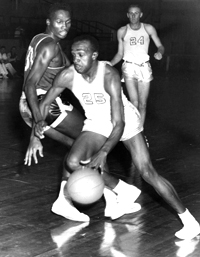
Charles Brown
Dec1
On this day in 1956, Charles Brown became the first black athlete to participate in a major college sport in Texas when he suited up for Texas Western College (now Univ. of Texas at El Paso), 10 years before John Westbrook at Baylor and Jerry LeVias at Southern Methodist University broke the color line for the Southwest Conference in September 1966. Brown had attended predominantly black Douglass High School in El Paso, served in the Air Force during the Korean War then attended Amarillo Junior College before he and his nephew, Cecil, joined Texas Western. In his debut, Brown scored 16 points and, according to the El Paso Times, “dazzled the crowd” as the Miners beat New Mexico Western 73-48. Though only 6-foot-1, from 1956-1959, Brown led the Border Conference in scoring and rebounding. He concluded his career with 1,170 points and 578 rebounds, averaging 17.5 points and 8.6 rebounds. Brown was inducted into the El Paso Athletic Hall of Fame in 1999 and the UTEP Athletic Hall of Fame in 2008. On March 2, 2011, UTEP hung Brown’s jersey No. 25 in the rafters. On Sunday, May 11, 2014, Brown passed away in Antioch, California at the age of 83.
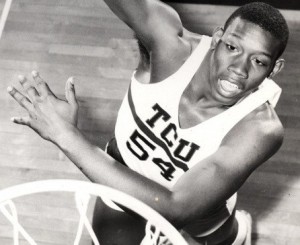
James Cash
Dec1
James Cash becomes the first African American to play basketball in the Southwest Conference on this day in 1966 when Texas Christian University opened its season at Oklahoma, losing 90-76. Cash had starred at Fort Worth I.M. Terrell High School playing for legendary coach Robert Hughes. Cash graduated from Terrell in 1965, but because of the NCAA’s freshmen ineligible rule, would not take the court for TCU until 1966. In his first season, 1966-67, Cash started at forward and averaged 11.5 points, and led the team in rebounds with 266. The team would finish the season 10-14 overall, 8-6 in the SWC (second place). However, Cash would help lead the team to a conference championship and NCAA Tournament (first round loss) the next season. An Academic All-American, Cash received a degree in math and later a master’s and Ph.D. from Purdue University and would become a full-time professor and then Dean of the MBA Program at the Harvard Business School (and the school’s first tenured black professor). Cash served on various corporate boards including Microsoft, General Electric, and Wal-Mart and became part owner of the NBA Boston Celtics.
Dec1
On this day in 1976, the Clarksville neighborhood in Austin was added to National Register of Historic Places. Clarksville was originally the location of slave quarters for a plantation outside of Austin owned by Texas Governor Elisha M. Pease who gave the land to his emancipated slaves. Freedman Charles Clark established the community in 1871 and subdivided the land among other freedmen.
Blog: Ron Goodwin, Ph.D., author, PVAMU history professor
Ron Goodwin’s bi-weekly blog appears exclusively for TIPHC. Goodwin is a San Antonio native and Air Force veteran. Generally, his column addresses contemporary issues in the black community and how they relate to black history. He and the TIPHC staff welcome your comments.
Latest Entries
A New Hope
Forgive me for borrowing the title of one of the most profitable films in history, “Star Wars: A New Hope.” I’ve always been enamored by space. I’m a child of the 1960s and I remember playing with my Major Matt Mason action figure (not a doll!) as my family [...]
Tell me the truth
Democracy – a) government by the people, b) a government in which the supreme power is vested in the people and exercised by them, directly or indirectly through a system of representation usually involving periodically held free elections. Merriam-Webster Dictionary There were many things I learned from my father. [...]
Submissions Wanted
Historians, scholars, students, lend us your…writings. Help us produce the most comprehensive documentation ever undertaken for the African American experience in Texas. We encourage you to contribute items about people, places, events, issues, politics/legislation, sports, entertainment, religion, etc., as general entries or essays. Our documentation is wide-ranging and diverse, and you may research and write about the subject of your interest or, to start, please consult our list of suggested biographical entries and see submission guidelines. However, all topics must be approved by TIPHC editors before beginning your research/writing.
We welcome your questions or comments. Please contact Mr. Michael Hurd, Director of TIPHC, at mdhurd@pvamu.edu.
